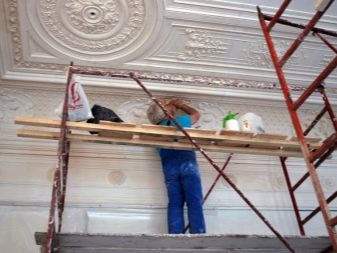What subjects do you need to take to an architect?

People involved in the creation of human goods have always been respected by society. The profession of an architect is an example of this. Buildings and structures of any scale require careful architectural design before construction. This ancient and revered profession combines knowledge not only of engineering, but also of technical, artistic and even humanitarian sciences.
Getting a fundamental education in architecture is not an easy task, but with personal purposefulness and good preparation, it is quite possible to master the complex, but creative profession of an architect.
Characteristics of the profession
Architecture combines technical and creativity. Previously, this profession was perceived as a specialization that allows you to carry out construction projects. This narrow focus was formed in the process of urbanization, when the era of construction of cities and towns began. In the understanding of most people, a city planner is the one who shapes the image of the city, and the talent of a specialist was assessed by his finished works. But already in the last century, the view on the profession of an architect became much broader, and the specialization began to be divided into 2 global branches.
- Engineering industry. Here the task of the architect is the volumetric design of buildings and structures of various types and purposes. These can be residential complexes or production workshops. The project must be worked out to the smallest detail and contain detailed drawings, accompanied by a description.
- Urban planning industry... In this case, the initial tasks of designing residential buildings are solved, taking into account the location of the entire infrastructure: highways, communications, retail outlets, children's and medical institutions. In the process of forming a project, the architect takes into account the wind rose, soil features, the depth of groundwater, and so on. After the work done by the architect, the design branch is connected, where the project of the buildings themselves is already being created.

Any profession undergoes changes over time on the way of its development. Today the specialization under consideration has several of the most popular varieties.
- Main architector. This is a competent and experienced professional in his field, who can control other specialists and can see the nuances of any architectural project, correcting problem areas in them in advance (before the start of construction work). In addition, this person also performs managerial functions, which consist in the distribution of duties and delegation of authority among the working group entrusted to him.
- Design Industry Architect... His task is to create a unique and highly artistic project, which can either affect a monumental building or be limited to the interior design of a room. The aesthetics (external and internal) of structures plays an important role in construction, therefore the designer in the field of architecture today is one of the demanded professions.
- Landscape architect. In addition to buildings, architecture also concerns the design of the surrounding area. Designing a garden, park area or adjoining territory - all these are the tasks of a landscape architect. Such a specialist, in addition to design knowledge, must also understand agricultural issues, since the landscape is inextricably linked with the landscaping of the territory.
- Restoration work architect... This specialization focuses on the restoration of monuments, buildings and structures of historical or cultural significance. The architect is challenged not only to correctly and efficiently restore the object, but also to do it so that it matches its original appearance as much as possible.
In the activity of a modern architect, knowledge of various orientations is important, therefore, this profession implies a serious process of long and fundamental training.


University requirements
To become an architect, it is not enough to score high on the USE results and pass the entrance exams. Specialized higher educational institutions will require the applicant to pass tests in academic drawing, drawing and composition. Such requirements depend on the chosen university, as well as on the specifics of the faculty where you want to study. You can start studying at a university only after grade 11. If you want to study architecture in more detail and in depth, it makes sense after the 9th grade to enter a specialized college and start studying the profession from scratch, and then enter for further education at a university you have deliberately chosen.
The requirements of architectural schools are quite serious, and an important among them is the drawing exam. This exam is carried out in 2 stages. First, the applicant will be asked to complete a three-dimensional drawing of an antique head within 6 hours. At the next stage, in 4 hours, the subject will have to draw a volumetric composition consisting of geometric shapes. The drawing must be done in the size of 40x30 cm using a graphite pencil.
In his examination paper, the future architect must show his spatial thinking, the ability to see objects in projection, know how proportions are transferred to the drawing, and understand by what laws forms are created. In addition, the applicant must understand the laws of perspective, line, tone application.The academic drawing performed by the future student will show his ability to place an image within the sheet, correctly see all the nuances of the composition, and so on.
All these practical skills are a necessary foundation in order to gain further knowledge in the field of architectural design.

Subjects for admission and preparation
Thinking about entering an architecture university, it is important not only to master well the school subjects necessary for passing the exam, but also to take additional lessons in drawing and drawing... This preparation will increase your chances of being enrolled in your chosen institution. In order for the preparation to be focused, it makes sense to clarify in advance what exams and tests you will have to pass in the university that you have chosen for yourself.
If admission to a higher education institution seems difficult to you, you can start studying in college, and after that you can raise your level in a higher education institution. To enter an architecture college or technical school after grade 9, you need to try to get the highest possible grades at school, as well as pass mathematics, Russian, social studies. In addition, a creative drawing and sketching competition is also possible. After the 9th grade, studies at the College of Architecture will be 4 years. If you enter this college after grade 11, the term of study will be 34–36 months.
Approximately the same list of subjects must be passed to an architect for admission to a university after grade 11. The basic subjects for passing the exam will be mathematics, Russian language and history (or social studies). But depending on the specialization, they may differ slightly from each other:
- architect-designer - for admission, you will need an exam in the Russian language, history and literature;
- restoration architect - the applicant takes the exam in mathematics, computer science, Russian language and history.
Drawing and drawing will be additional exams. The order of their conduct is different for each university, and for successful delivery you need to prepare for them in advance.
The creative test can be carried out by each university at its discretion, but, as practice shows, this does not happen everywhere, but only in the most highly rated educational institutions with a large number of applicants for a place.








The article is useful, it clarified a lot. Thanks.